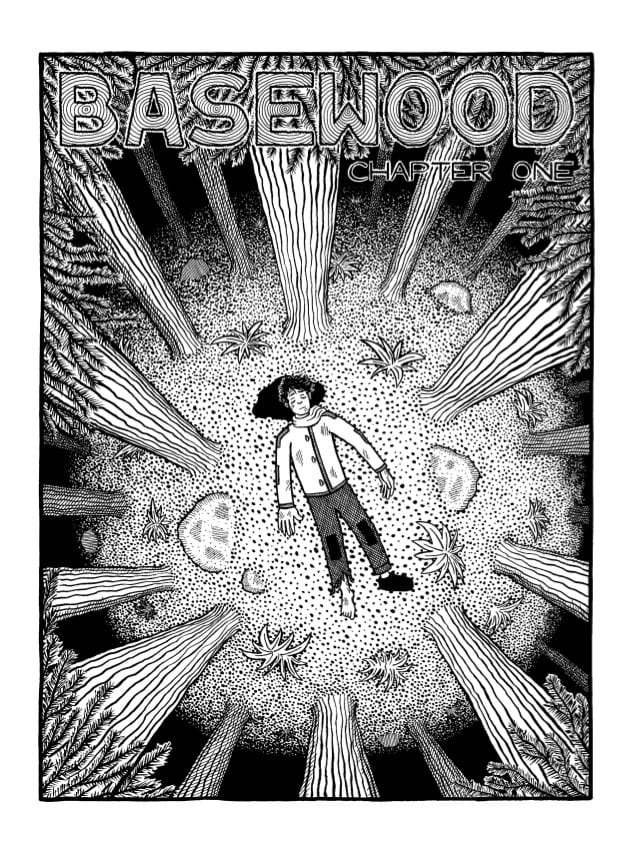Alec Longstreth’s Basewood takes the simple question we all ask ourselves - “Who am I?” - and examines the complexities behind the three-word sentence in the form of a fable. Longstreth’s story is of someone wiped clean and intent on finding himself, though contrasted with someone whose past weighs heavy on his present. Do either of the characters actually know who they are? Or are they prisoner to their circumstances?
Basewood opens with a man lying unconscious in the forest, the rain beginning to wash away the pool of blood that haloes his head. He has no idea where he’s been or what brought him there, but a chance encounter with a dog gives him the opportunity to figure out where he is going. Once he gets there, Argus enters the story, a hardy hermit in the woods, the dog’s owner, and the amnesiac’s savior — and a messenger of what might be if the amnesiac doesn’t work to solve his own mysteries.
As Basewood unfolds, the answers to the question don’t manifest in much that is unexpected in plot terms. So many of the pieces are already there, either in the story or in your cultural expectations after years of reading stories of lost people. Each revelation comes with a calm, accepting nod, rather than stunned gaping.
Once the moment arrives for second chances to make the difference, Longstreth shows how the cycle of life and the cycle of tragedy are intertwined, and every player’s actions are key to answering the “Who am I?” question.
Basewood originally ran over the course of five issues of Longstreth’s self-published minicomic, and this hardcover collection is the result of a successful Kickstarter campaign to make the Ignatz Award-winning story available in book form. This new version makes the panels larger, more imposing, though not upsetting the quiet intimacy that the book portrays even in its moments of adventure.
The hugeness does allow the reader to appreciate the world that Longstreth has crafted close-up. It almost engulfs you, which is appropriate, as the landscape is as integral a character to the story as any human or animal. It’s a stark, design-infused fantasy world, where lines of trees or falling snow or towering peaks are rendered to their graphical advantage. The landscape functions as much psychologically as actual, an emotional, otherworldly gameboard for the amnesiac to wander and uncover the answers to his own mysteries.
Longstreth allows the reader’s eyes to ponder the world that surrounds his characters through silent sequences. In much of the book, there are no word balloons to crowd out or pigeonhole the actions within the precise pacing, with the exception of two extended monologues allowing character history to unfold in a deliberate and tidy way.
With so many intense levels to the storytelling, the real triumph of Basewood is its simplicity, at least in presentation. Longstreth has fashioned a fable that he doesn’t overburden it with unnecessary details, inserting what is necessary structurally, and offering the visuals to fill in any gaps emotionally that the casual dialogue might leave. What transpires is a gentle story of two epic tragedies coming together in tragedy to create at least one victory, a parable of partnership and lessons learned.










